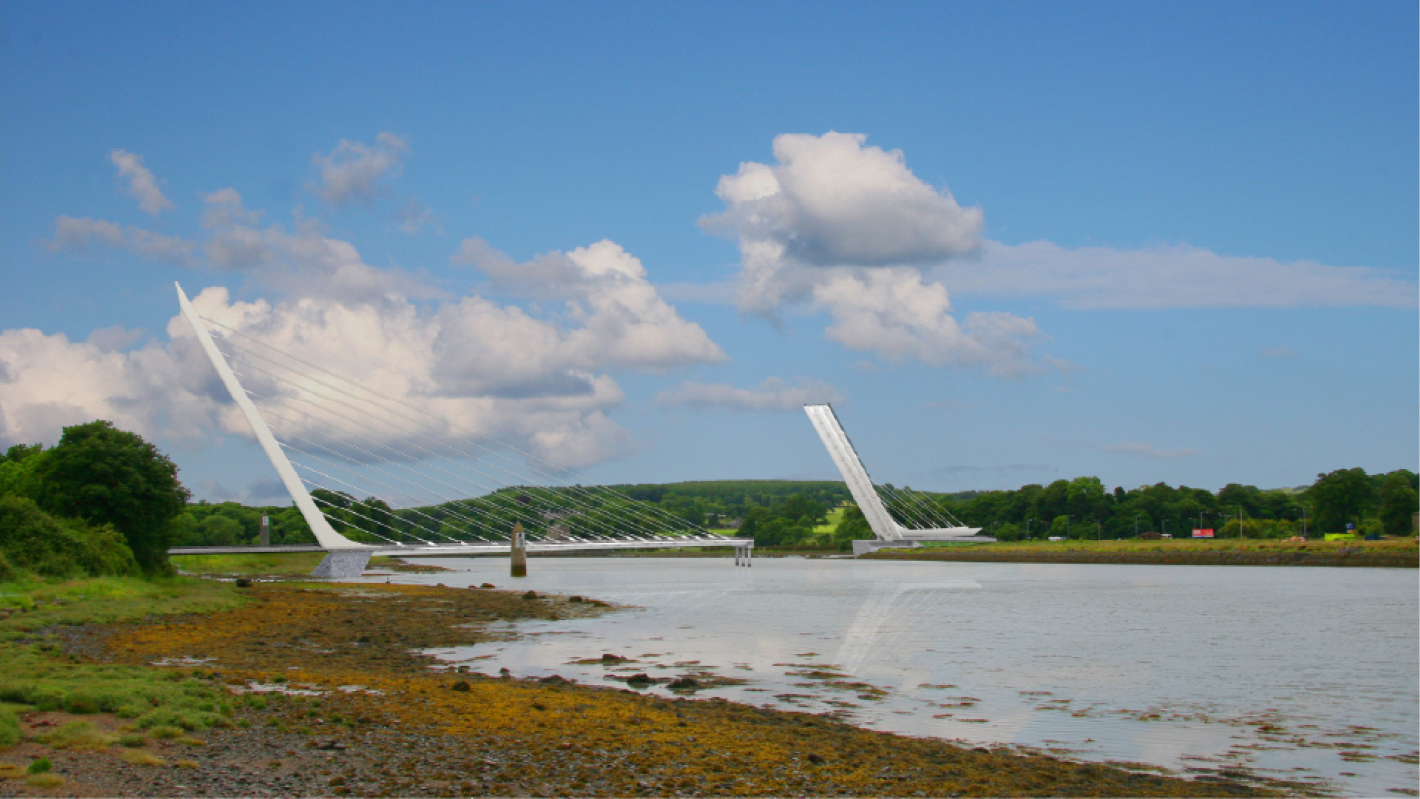
An artist’s impression of the proposed Narrow Water Bridge at Carlingford Lough.
Much-anticipated cross-border infrastructure project moves forward to construction
On Tuesday, 4 June, senior political representatives gathered in Co. Louth to mark the commencement of construction of the Narrow Water Bridge project, a highly symbolic, cross-border infrastructure scheme. The bridge will provide a direct link between the Mourne Mountains in Co. Down and the Cooley Peninsula in Co. Louth, strengthening North-South links, deepening connections between communities on both sides of the border and developing the wider Carlingford Lough area as a tourism destination.
An allocation of more than €102 million plus VAT is being provided towards the project from the Irish Government's Shared Island Fund.
Speaking at the ground breaking ceremony, Taoiseach Simon Harris described the bridge as “a game-changer for commerce, daily life and tourism in this part of our shared island.” Tanaiste Micheál Martin said the project had the potential to be a "defining, iconic symbol of the journey our country has made" while Northern Ireland's Infrastructure Minister John O'Dowd said the bridge “will serve as a vital element of cross-border active travel while facilitating greenways, mountain bike trails, walking routes and beaches in the Carlingford Lough region.”
The bridge itself is an iconic design, with a taller, longer fixed southern span supported by a south leaning pylon, and a second separate smaller, shorter northern span supported by twin pylons, which can open using a rolling bascule mechanism. The south fixed cable stayed span is 138m and northern cable stayed rolling bascule (opening) span is 57m. The asymmetry of the span is reflected in the pylon heights, with the higher pylon located on the southern side of the crossing. The lower twin pylons on the northern side support the opening span.
The cable-stays are small diameter stays comprised of parallel strands with multiple layers of corrosion protection. Stay anchorages connect the cables stays to the pylon and the orthotropic steel deck. The south fixed pylon will be constructed from structural steel, consisting of an outer and inner steel skin which will be infilled with concrete ballast. Similarly, the steel pylons that support the bascule span will be infilled with concrete.
The south pylon and deck are fixed to the south abutment, forming an integral connection. The bridge will have a movement joint at the intermediate pier and at the north abutment, as required to allow the opening of the north bascule span and to accommodate bridge decks expansion and contraction.
ROD has provided the environmental assessment, planning, detailed design and construction contract procurement services for the project under an initial commission with Louth County Council that extends back to 2007. We have been supported by H&H on the moveable bridge, by OBFA Architects and JN & G Traynor & Partners on the control building, Kevin Cleary & Associates and Austin Reddy & Company. Our involvement in the project is set to continue as we have recently been appointed under a new contract for Stage 4 and 5 Consultancy Services to administer and supervise the works through the construction and handover stages.
BAM Ireland was awarded the contract for the construction of the Narrow Water Bridge on 13 May 2024, and we look forward to collaborating with them on the project. In 2023, BAM completed the construction of the ROD-AECOM-designed, award-winning N26 Cloongullane Bridge over the river Moy and are currently advancing the ROD-designed Sustainable Transport bascule bridge crossing of the river Suir in Waterford City.